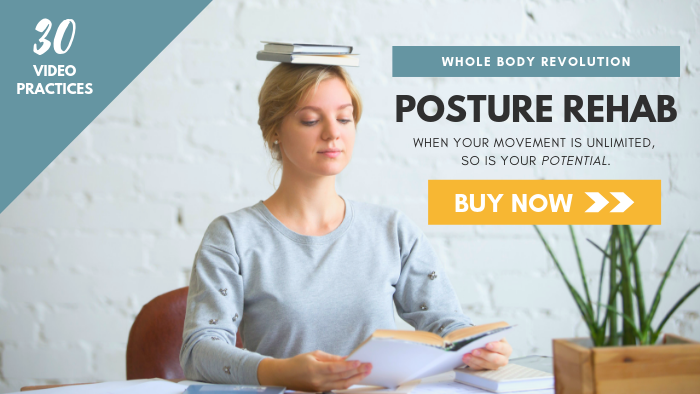Ugh, back pain. It’s no fun when it strikes.
And when you have a case that won’t go away, the first person you probably turn to for back pain relief is your doctor.
That’s a good thing. Back pain has many causes and it’s smart to rule out the scary ones.
But a lot of times your doctor doesn’t know why your back hurts. It’s frustrating, but true.
That’s when people usually come to me — when they’d been through the regular medical system and still don’t have any answers.
But listen…
Back pain is not a normal part of life.
There’s a very good reason that your doctor hasn’t found the cause of your back pain yet — and it’s not entirely her fault.
In fact, here are three reasons your doctor can’t help you get back pain relief:
They’re Trying to Fix Back Pain Only Where It Hurts
When your back hurts, it makes sense that a doctor would image your spine. X-rays and MRIs can highlight things like nerve impingement or arthritis that may be causing pain.
But often images don’t show anything “wrong.” Which begs the question: what is causing your back pain?
Here’s the truth…
If there’s nothing wrong with your spine and yet you still have back pain, it’s likely because the problem isn’t starting in your back.
Why?
Your back does not exist in isolation in your body. It connects and relates to every other part of you.
Modern medical training teaches doctors to look at joints individually within the body. But when any joint is dysfunctional, it affects all the other ones around it.
Tight ankles make your low back work more. Hip flexors can crank down and pull your spine forward, straining back muscles. Tension in your chest muscles yanks on your upper back and neck.
To really address the root cause of your back pain, you’ve gotta take a holistic approach to alignment and posture — and I don’t mean holistic as in “natural,” but rather whole-body.
And this is exactly how I designed my Posture Rehab course.
Insurance Limits What Your Doctor Can Treat for Back Pain Relief
Part of the reason doctors only look at back pain in your back is that insurance companies often restrict what parts of your body can be treated based on the diagnosis.
So, a diagnosis of back pain means treatment must focus on your back. This is totally a function of a very broken system and not the fault of doctors at all.
But, alas, we’re all shaped by the environment within which we function, so doctors and physical therapists who work with insurance often get more or less trained to only look at the site of the complaint rather than taking a whole-body approach.
This is the biggest reason I have never taken insurance in my practice. Often, by the time clients get to me, they’ve had the piece-meal offerings of insurance-based treatment with no results and it’s time for a more comprehensive approach.
If this is you, too, take advantage of my Posture Rehab course which takes a holistic approach for long-lasting back pain relief rather just treating symptoms.
It’s totally digital so you can access it from anywhere in the world. And maybe on Mars. I’m not sure how good the wifi is there yet though.
Doctors Rely On Drugs and Surgery to Provide Back Pain Relief
I’m sure you’ve heard the saying that if you only have a hammer, everything looks like a nail, right?
Well, tools often determine the lens through which you view the body. My tools are hands-on manipulation and movement re-education, so my assessments focus on alignment because that’s what I can affect.
Doctors have very little to no training (in my experience, at least) in postural assessment. They’re looking for something they can mechanically fix (surgery) or, barring that, medicate against.
Unfortunately, if there’s nothing “wrong” with your back and therefore nothing they can operate on, drugs are often the next tool they reach for. But pain pills don’t get to the root cause of your back pain — they only eliminate the symptoms.
And as soon as you stop taking them, the pain comes back.
Surgery, while sometimes necessary and very effective, is invasive and frequently fails to get results. In fact, there’s a whole diagnosis code for “failed back surgery syndrome” — the failure of surgery to fix or correct back pain symptoms.
In my experience, most of my clients would rather take a natural approach to healing back pain and avoid the complications of drugs and surgery.
The Bottom Line for Back Pain Relief
Now, I want to emphasize that I’m not ragging on doctors here. They’re really good at what they do and I have the utmost respect for their work.
But posture and movement therapy just isn’t what they do. They’re not trained to look at the body this way, plain and simple.
Which is why many people never get real back pain relief by going through the traditional medical system.
Sometimes you’ve got to work outside the box a little bit to get what you want. Of course, you can absolutely take pain pills and limit your activity to manage your back pain — that’s totally valid.
But if that’s not the route you want to take, it might be time to try something a little out of the box.
I created the Posture Rehab digital course for people just like you. It’s based on my fifteen years of experience in clinical practice working with clients who want to move more comfortably without drugs or surgery.


So good Sukie!! Between the two of us I hope people get the message.
If this doesn’t work, it’ll be a soapbox and a megaphone in the park. I WILL BE HEARD! Lol